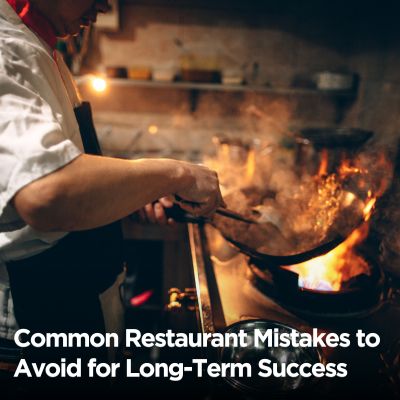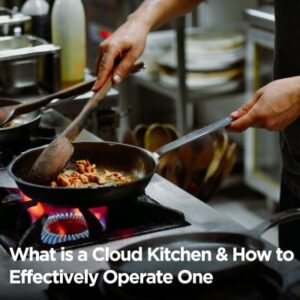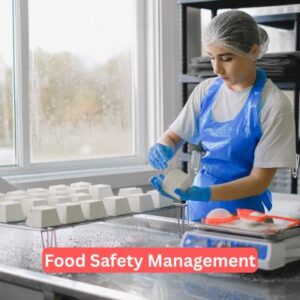Running a restaurant is rewarding, but it’s also full of challenges. Even the most popular places can struggle if they overlook the details that keep customers happy and operations smooth.
Mistakes like slow service, inconsistent food quality, or poor cost management can slowly chip away at a restaurant’s success.
Statistics show that nearly 30% of restaurants don’t survive their first year, and about 60% close within five years. While the reasons vary, many failures stem from common missteps that could have been avoided.
From inefficient kitchen operations to lackluster customer service, small mistakes can turn into big problems. A long wait time might push diners to competitors, while bad financial planning can drain profits.
The good news? These issues have solutions. By identifying and fixing these common restaurant mistakes early, owners can build a successful business that keeps customers coming back for more.
The Current Landscape of the Restaurant Industry
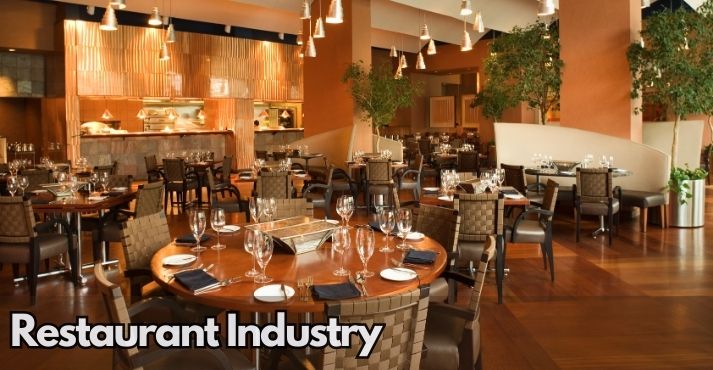
The restaurant industry in 2025 is highly competitive and constantly changing. Rising operational costs, changing consumer expectations, and ongoing supply chain challenges continue to pressure restaurant owners.
While inflation has begun to stabilize, menu prices still increased by 3.4% year-over-year as of January 2025, impacting pricing strategies and profitability.
Additionally, food-at-home prices rose by 0.5% in the same month, further influencing consumer dining choices and spending habits.
Supply chain disruptions, though easing, remain a concern for many restaurants, affecting food consistency and service quality. The price gap between groceries and dining out remains wider than historical averages, affecting customer choices and restaurant sales.
Meanwhile, digital integration is becoming a necessity, with customers expecting seamless experiences such as online ordering, AI-driven support, and automated operations.
Restaurants investing in technology and sustainability initiatives are more likely to stand out, but balancing these advancements with affordability remains a challenge.
In this competitive environment, avoiding restaurant service mistakes and addressing food quality issues is more important than ever.
Customers now expect higher standards, personalization, and efficiency. Restaurants that successfully integrate cost control, technology, and high-quality service will be in a stronger position to stay ahead.
Key Mistakes Restaurants Should Avoid
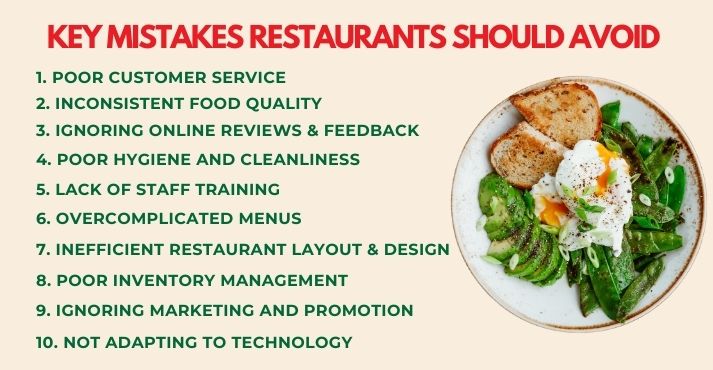
Running a successful restaurant is about more than just serving great food. Many businesses struggle due to operational mistakes that push customers away and hurt profitability.
From poor customer service to ignoring online feedback, these issues can quickly damage a restaurant’s reputation. Below are some of the most common pitfalls and how to avoid them:
1. Poor Customer Service
Customer service is the backbone of any restaurant. Even if the food is excellent, poor service can leave a lasting negative impression.
73% of consumers will switch to a competitor after multiple bad experiences, making consistent, high-quality service essential for customer retention.
Diners expect friendly, attentive staff who make them feel valued. Common problems like slow service, rude employees, or forgotten orders can lead to frustration and negative reviews.
To prevent this, restaurants should prioritize comprehensive staff training that focuses on communication skills, conflict resolution, and efficiency. Encouraging employees to engage warmly and professionally builds strong customer relationships and repeat business.
Additionally, using technology in restaurants such as tableside ordering systems or mobile payments can reduce wait times and improve the overall dining experience.
2. Inconsistent Food Quality
Customers expect the same great taste and presentation every time they visit. Inconsistencies in portion sizes, flavors, or plating can frustrate diners and lead them to choose other restaurants.
Food quality issues in restaurants often stem from supply chain disruptions, high staff turnover, and a lack of standardized recipes.
To avoid these problems, restaurants should implement strict quality control measures, such as using detailed recipes, training kitchen staff thoroughly, and regularly reviewing food suppliers.
Conducting regular taste tests and monitoring portion sizes can help ensure consistency. Additionally, investing in high-quality ingredients and reliable kitchen equipment can minimize variations in preparation and presentation.
A prime example is McDonald’s, which has built its global success on delivering consistent food quality across thousands of locations. Customers expect a Big Mac in New York to taste the same as one in Tokyo.
To achieve this, McDonald’s follows standardized recipes, enforces strict quality control, and provides extensive staff training. The company also works with trusted suppliers to maintain ingredient consistency.
3. Ignoring Online Reviews and Feedback
Online reviews can significantly impact a restaurant’s reputation. Many customers check platforms like Google, Yelp, and TripAdvisor before deciding where to dine, and negative reviews can quickly deter potential guests.
94% of consumers choose to avoid a business after reading a negative review, highlighting the importance of managing online feedback effectively.
Ignoring complaints or responding defensively can damage a restaurant’s image even further. Instead, businesses should regularly monitor reviews, acknowledge concerns professionally, and offer solutions, such as a refund or a complimentary dish, to resolve issues.
Thanking customers for positive feedback also helps build loyalty and trust. Additionally, encouraging satisfied diners to leave reviews can improve overall ratings and counterbalance occasional negative comments.
By actively engaging with online feedback, restaurants can strengthen their reputation and attract more customers.
4. Poor Hygiene and Cleanliness
Cleanliness is a major factor in customer trust and compliance with health regulations. A single report of dirty restrooms, sticky tables, or unsanitary kitchen practices can lead to lost customers and even health code violations.
Poor hygiene not only affects a restaurant’s reputation but also increases the risk of foodborne illnesses.
To maintain high hygiene standards, restaurants should enforce strict cleaning schedules, train staff on proper sanitation practices, and conduct regular health inspections.
Kitchen staff should follow food safety guidelines, such as proper handwashing, wearing gloves, and maintaining correct food storage temperatures.
Investing in professional deep cleaning services and using checklists for daily cleanliness tasks can also ensure a consistently hygienic environment.
An example of how poor hygiene can severely impact a restaurant’s reputation and compliance is the 2015 Chipotle E. coli outbreak. Due to contaminated ingredients and lapses in food safety protocols, dozens of customers were hospitalized, leading to a national outcry.
The incident forced Chipotle to overhaul its food safety procedures and temporarily close multiple locations.
Similarly, Gordon Ramsay’s London restaurant faced scrutiny in 2012 after failing hygiene inspections due to pest issues and poor cleanliness standards, proving that even high-end establishments aren’t immune to such risks.
5. Lack of Staff Training
A well-trained staff is essential for smooth food service operations and excellent customer service. Problems in the food service industry often arise when employees are unsure of how to handle customer requests, manage busy shifts, or adhere to food safety standards.
86% of hospitality businesses provide less than 10 hours of ongoing training, leaving employees unprepared for real-world challenges.
Untrained employees are more likely to make mistakes, leading to service delays, incorrect orders, and dissatisfied customers.
Additionally, staff who lack proper food handling knowledge can unknowingly violate health regulations, putting both customers and the restaurant’s reputation at risk.
To avoid such restaurant management errors, businesses should implement structured onboarding programs that cover menu knowledge, hospitality skills, and operational workflows.
Regular refresher training ensures employees stay updated on best practices in customer service, food preparation, and safety regulations.
Investing in ongoing education, mentorship programs, and performance-based incentives not only improves service quality but also boosts employee morale and reduces turnover.
6. Overcomplicated Menus
A lengthy, unfocused menu may seem like a great way to offer variety, but it can overwhelm customers and slow down kitchen operations.
When diners struggle to decide, table turnover decreases, and complex menus can lead to inconsistent dishes or longer preparation times. Additionally, maintaining an extensive inventory of too many dishes can increase food waste and lead to higher operational costs.
A well-curated menu that highlights a restaurant’s strengths is more effective. Restaurants should focus on a balanced selection of customer favorites and specialty dishes while eliminating underperforming items.
Simplifying the menu can also help avoid restaurant management errors related to kitchen efficiency and inventory control. Using seasonal ingredients and rotating limited-time specials can keep the menu fresh without overcomplicating it.
Clear, descriptive menu layouts and digital ordering systems can further enhance the customer experience by making selections easier.
7. Inefficient Restaurant Layout and Design
The physical layout of a restaurant is important for both customer satisfaction and staff efficiency. Poorly designed spaces can lead to crowded seating, slow service, and even safety hazards.
If tables are packed too closely, diners may feel uncomfortable, and narrow walkways can make it difficult for servers to move efficiently. Ideally, tables should be spaced 24 to 30 inches apart to allow for both comfort and ease of movement.
To create a welcoming and efficient space, restaurant owners should balance comfort with functionality. Proper table spacing, clear walkways for staff, and designated waiting areas can improve service flow.
In many cases, slow service results from layout inefficiencies that create bottlenecks or delay food delivery. Open kitchen concepts can improve transparency, while flexible seating arrangements accommodate different group sizes.
Additionally, digital floor plans and reservation management systems can help maximize space without sacrificing customer comfort.
8. Poor Inventory Management
Inefficient inventory management can lead to food wastage, ingredient shortages, and higher operational costs. If restaurants overorder, perishable ingredients can spoil before they’re used, leading to unnecessary waste.
On the other hand, running out of primary ingredients can frustrate customers and lead to common restaurant customer complaints about unavailable menu items.
To prevent these issues, restaurants should implement robust inventory tracking systems. Automated inventory management tools help monitor stock levels in real-time, reducing spoilage and ensuring all the main ingredients are always available.
Additionally, better forecasting based on sales data can help restaurants order the right quantities, minimizing both waste and shortages. Conducting regular inventory audits and training staff on portion control can further optimize food usage and improve cost efficiency.
An example of inventory management done right is Starbucks. The global coffee giant uses advanced technology and automation to streamline operations, including enterprise resource planning (ERP) systems to track and manage inventory levels.
By analyzing sales data and using automated tracking, Starbucks ensures that popular ingredients like coffee beans, syrups, and milk are always stocked while minimizing waste.
9. Ignoring Marketing and Promotion
Many restaurants make the mistake of relying solely on word-of-mouth to attract customers. While reputation is important, failing to actively promote a restaurant can result in slow business, even for high-quality establishments.
Customers today expect restaurants to have a strong online presence, and a lack of marketing can result in missed opportunities. An effective restaurant marketing strategy combines social media engagement, loyalty programs, and email campaigns.
Platforms like Instagram and TikTok allow restaurants to showcase signature dishes, promotions, and behind-the-scenes content, attracting food enthusiasts.
Loyalty programs encourage repeat business by rewarding customers, while email marketing keeps them informed about new menu items, special events, and discounts.
Restaurants that take a proactive approach to marketing are more likely to stand out in a competitive market, build a loyal customer base, and sustain long-term success.
10. Not Adapting to Technology
Technology is changing the restaurant industry, with digital ordering, self-service kiosks, and AI-driven customer support becoming more common. However, some restaurants resist these advancements, contributing to ongoing food industry issues like slower service, inefficiencies, and missed revenue opportunities.
Ignoring technology can also contribute to restaurant hygiene mistakes, as outdated manual processes increase the risk of cross-contamination and improper food handling.
Digital solutions like contactless payment, automated kitchen displays, and smart reservation systems improve efficiency while enhancing cleanliness and customer convenience.
In fact, 77% of restaurants that have adopted new technology report increased efficiency, proving its impact on operations. To stay competitive, restaurants should implement user-friendly technology that streamlines service.
Online reservation platforms reduce wait times, digital ordering minimizes errors, and self-service kiosks let customers customize their meals quickly.
Industry events like the Food Service Equipment Trade Show showcase the latest innovations, helping businesses find solutions to boost efficiency and customer satisfaction.
A great example is McDonald’s self-service kiosks, which simplify ordering, cut wait times, and reduce order errors. Since introducing kiosks, McDonald’s has seen a sales increase, as customers tend to order more when using digital screens compared to face-to-face ordering.
Challenges in the Restaurant Industry
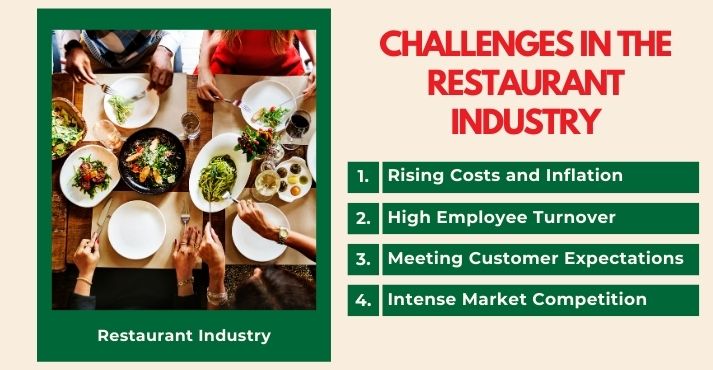
Running a successful restaurant has always been demanding, but recent years have brought additional complexities that make it even tougher to stay profitable. From rising costs to evolving customer expectations, restaurant owners must constantly adapt to remain competitive.
Below are some of the most pressing challenges the industry faces today:
1. Rising Costs and Inflation
The restaurant industry has been hit hard by increasing food prices, labor costs, and supply chain disruptions. A recent survey found that 88% of restaurant owners reported rising staff expenses, while 86% faced increased food costs.
As a result, many restaurants have had to raise menu prices, but this can drive customers away if not managed strategically.
Solutions:
- Menu Engineering: Focus on high-margin items and reduce reliance on expensive ingredients.
- Operational Efficiency: Invest in technology to streamline ordering, inventory management, and staff scheduling.
- Supplier Negotiation: Establish long-term contracts with suppliers for better pricing stability.
2. High Employee Turnover
The restaurant industry has long struggled with high employee turnover, making recruitment and retention ongoing challenges for restaurant owners.
Many businesses face difficulties in maintaining a stable workforce, leading to understaffed shifts, longer wait times, and inconsistent service quality.
Solutions:
- Competitive Compensation: Higher wages and benefits help attract and retain skilled workers.
- Work Culture & Training: A positive work environment with clear career growth opportunities reduces turnover.
- Flexible Scheduling: Offering more work-life balance can increase job satisfaction.
3. Meeting Customer Expectations
Diners today expect more than just good food—they want convenience, dietary options, and personalized experiences. The demand for takeout and delivery services has increased, and many customers now seek healthier menu choices.
Solutions:
- Menu Adaptation: Include plant-based options, allergen-friendly meals, and sustainable ingredients.
- Technology Integration: Implement digital ordering, mobile payments, and AI-driven personalization.
- Customer Feedback Loops: Regularly assess customer preferences to stay ahead of trends.
4. Intense Market Competition
With new restaurants constantly emerging and food trends shifting rapidly, attracting and retaining customers is more challenging than ever. In addition, online reviews and social media can make or break a restaurant’s reputation.
Solutions:
- Brand Differentiation: Focus on a unique theme, cuisine, or experience.
- Marketing & Loyalty Programs: Use social media, influencer partnerships, and exclusive deals to attract and retain customers.
- Exceptional Service: Memorable customer service leads to repeat business and positive word-of-mouth.
By addressing these challenges with innovative strategies, restaurants can enhance their resilience and long-term success.
Conclusion
The success of a restaurant depends on avoiding major mistakes that can harm reputation, profitability, and customer satisfaction. Issues like poor customer service, inconsistent food quality, and ignoring online feedback can quickly drive diners away.
Similarly, restaurant hygiene mistakes, inefficient inventory management, and lack of marketing can severely impact operations and growth.
To thrive in today’s competitive industry, restaurants must focus on exceptional service, cleanliness, smart marketing, and operational efficiency.
Addressing common restaurant customer complaints, using technology, and maintaining strong staff training programs are essential for long-term success.
Restaurants that adapt to changing consumer expectations, refine their operations, and enhance customer experiences will gain a strong competitive edge.
By focusing on quality, efficiency, and innovation, businesses can achieve long-term success in a fast-paced and ever-evolving market.

